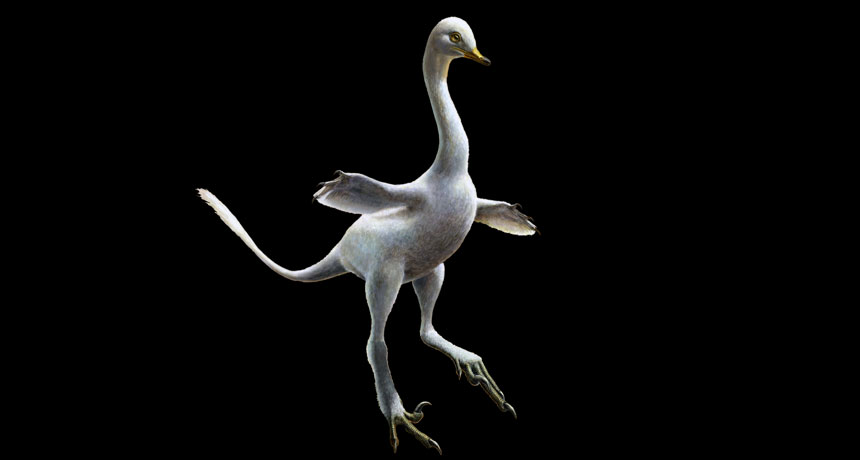avian Of or relating to birds.
birds Warm-blooded animals with wings that first showed up during the time of the dinosaurs. Birds are jacketed in feathers and produce young from the eggs they deposit in some sort of nest. Most birds fly, but throughout history there have been the occasional species that don’t.
colleague Someone who works with another; a co-worker or team member.
Cretaceous A geologic time period that included the end of the Age of Dinosaurs. It ran from roughly 145.5 million years ago until 65.5 million years ago.
dinosaur A term that means terrible lizard. These ancient reptiles lived from about 250 million years ago to roughly 65 million years ago. All descended from egg-laying reptiles known as archosaurs. Their descendants eventually split into two lines. For many decades, they have been distinguished by their hips. But a 2017 analysis called into question that characterization of relatedness based on hip shape.
extinct An adjective that describes a species for which there are no living members.
forelimb The arms, wings, fins or legs in what might be thought of as the top half of the body. It’s the opposite of a hindlimb.
fossil Any preserved remains or traces of ancient life. There are many different types of fossils: The bones and other body parts of dinosaurs are called “body fossils.” Things like footprints are called “trace fossils.” Even specimens of dinosaur poop are fossils. The process of forming fossils is called fossilization.
geological Adjective to describe things related to Earth’s physical structure and substance, its history and the processes that act on it. People who work in this field are known as geologists.
paleontologist A scientist who specializes in studying fossils, the remains of ancient organisms.
penguin flightless black-and-white bird native to the far Southern Hemisphere, especially Antarctica and its nearby islands.
radiation (in physics) One of the three major ways that energy is transferred. (The other two are conduction and convection.) In radiation, electromagnetic waves carry energy from one place to another. Unlike conduction and convection, which need material to help transfer the energy, radiation can transfer energy across empty space.
species A group of similar organisms capable of producing offspring that can survive and reproduce.
synchrotron radiation The term given to the high-energy radiation emitted as charged particles, such as electrons, accelerate to nearly the speed of light while traveling in a curved path.
theropod A usually meat-eating dinosaur that belonged to a group whose members are typically bipedal (walk on two legs). They range from small and delicately built to very large.
trait A characteristic feature of something. (in genetics) A quality or characteristic that can be inherited.
tyrannosaur A line of meat-eating dinosaurs that began during the late Jurassic Period, about 150 million years ago. These species persisted into the late Cretaceous Period, about 65 million years ago. The best known member of these species: the late Cretaceous’ Tyrannosaurus rex, a 12-meter (40-foot) long top predator of its time.
vertebrate The group of animals with a brain, two eyes, and a stiff nerve cord or backbone running down the back. This group includes amphibians, reptiles, birds, mammals and most fish.
X-ray A type of radiation analogous to gamma rays, but having somewhat lower energy.








